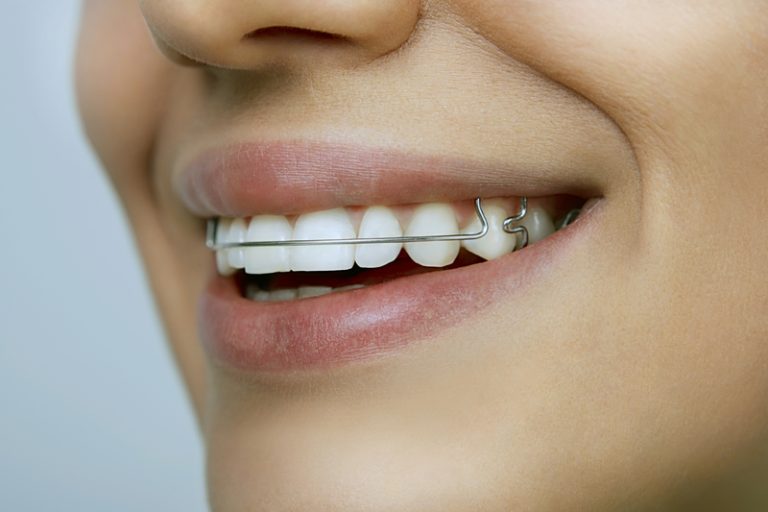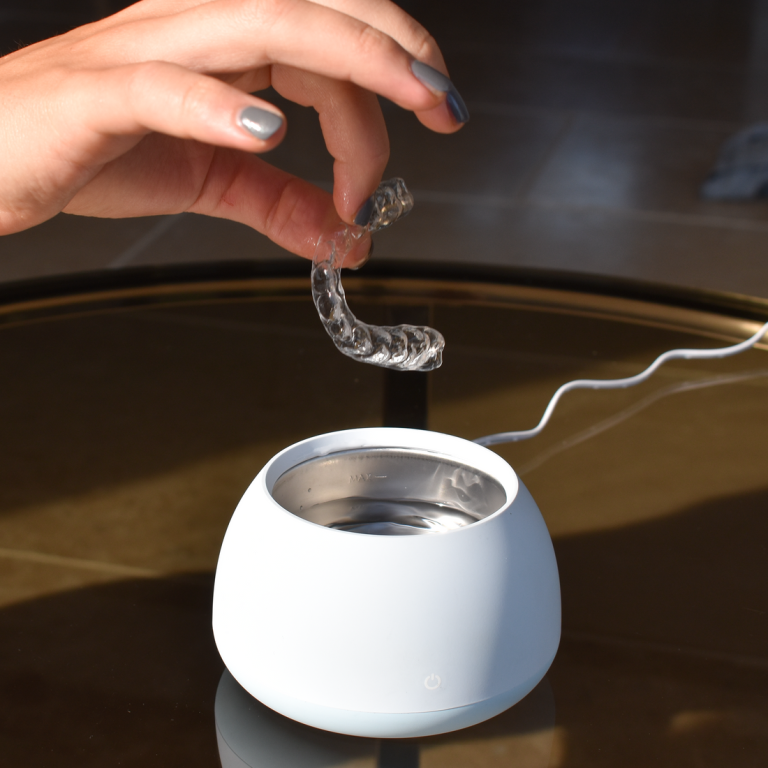Best Ultrasonic Retainer Cleaner: Ultimate Guide to Fresh Retainers
Last Updated on 1 month by DR. ALBIN SIPES
Keeping your retainer clean is essential for oral health. An ultrasonic retainer cleaner can make this task easy and efficient.
Retainers need regular cleaning to prevent bacteria buildup. Many people struggle with manual cleaning methods. Ultrasonic cleaners offer a high-tech solution. These devices use sound waves to remove debris and germs. They ensure your retainer stays fresh and hygienic. In this post, we’ll explore the best ultrasonic retainer cleaners available.
We’ll help you find the right one for your needs. Whether you’re new to retainers or looking to upgrade your cleaning routine, this guide will provide valuable insights. Stay tuned to discover top options and make an informed choice.
How Ultrasonic Retainer Cleaners Work
Ultrasonic retainer cleaners are essential tools for maintaining oral hygiene. These devices use advanced technology to ensure retainers stay clean and bacteria-free. Understanding how they work can help you see their value.
Ultrasonic Technology Basics
Ultrasonic cleaners use high-frequency sound waves to clean retainers. The device generates these sound waves, which create microscopic bubbles in the cleaning solution. This process is called cavitation.
The bubbles rapidly form and collapse, creating tiny shock waves. These shock waves dislodge dirt, bacteria, and other debris from the retainer. This method ensures a thorough clean without damaging the retainer.
Cleaning Mechanism
The cleaning process starts with filling the ultrasonic cleaner’s tank with water. Some models may require a special cleaning solution. Once the retainer is placed in the tank, the device is turned on.
The ultrasonic waves travel through the water, reaching all surfaces of the retainer. The cavitation process removes plaque, bacteria, and other residues. This cleaning method is gentle yet effective, making it ideal for delicate retainers.
Most ultrasonic cleaners have a timer function. This allows users to set the cleaning cycle duration. Typically, a cleaning cycle lasts between 3 to 5 minutes. After the cycle ends, the retainer is removed, rinsed, and ready for use.
Using an ultrasonic cleaner regularly ensures retainers stay hygienic. This prevents bad breath and reduces the risk of oral infections.
Here is a simple table summarizing the steps:
| Step | Description |
|---|---|
| 1 | Fill the tank with water or cleaning solution. |
| 2 | Place the retainer in the tank. |
| 3 | Turn on the device to start cleaning. |
| 4 | Wait 3-5 minutes for the cleaning cycle. |
| 5 | Rinse and use the retainer. |
Using an ultrasonic retainer cleaner ensures optimal hygiene. It keeps your retainer fresh and safe to use.
Top Features To Look For
Choosing the best ultrasonic retainer cleaner can be a bit challenging. Knowing what features to look for can make the process easier. Below are some of the top features you should consider.
Cleaning Efficiency
The primary function of a retainer cleaner is to clean efficiently. Look for a device that uses high-frequency sound waves. This ensures thorough cleaning by removing debris and bacteria. Some models offer multiple cleaning modes. These modes can handle different levels of dirt and grime. It’s also helpful to check user reviews. Reviews can offer insights into the actual performance of the cleaner.
Ease Of Use
An easy-to-use retainer cleaner saves time and effort. Look for models with simple controls. A one-button operation is ideal for most users. Some cleaners come with automatic shut-off features. This adds convenience and safety. Also, consider the size and weight of the cleaner. A compact and lightweight design is easier to handle and store.
Safety Features
Safety is crucial when using electronic devices. Ensure the cleaner has built-in safety features. Overheat protection is essential. It prevents the device from getting too hot. Another important feature is a non-toxic cleaning tank. This ensures that no harmful chemicals leach into your retainer. Additionally, some models come with a UV light. UV light can help kill bacteria and viruses, adding an extra layer of protection.
Best Ultrasonic Retainer Cleaners On The Market
Finding the best ultrasonic retainer cleaner can be a challenge. Many options are available. This guide will help you choose the right one for your needs. Here are some of the top-rated, budget-friendly, and premium choices on the market.
Top-rated Models
These models receive high ratings from users. They offer great value and effective cleaning.
| Model | Features | Price |
|---|---|---|
| iSonic F3900 | Compact size, 5-minute timer, removable tank | $39.95 |
| Branson Model B200 | Stainless steel tank, 5-minute cycle, digital display | $75.00 |
Budget-friendly Options
These cleaners offer good performance at an affordable price. Great for those on a budget.
- Ultrasonic Cleaner by Smile Direct Club – Easy to use, compact, and priced at $29.99
- Magnasonic Professional Ultrasonic Jewelry Cleaner – Versatile, 5 preset cycles, and priced at $39.99
Premium Choices
For those who want the best, these premium models offer advanced features. They are a bit pricier but worth the investment.
- iSonic D3800A – 10-minute timer, large tank, and priced at $89.95
- Pro HT Professional Ultrasonic Cleaner – Adjustable timer, digital controls, and priced at $129.99

How To Use An Ultrasonic Retainer Cleaner
Keeping your retainer clean is crucial for your oral hygiene. An ultrasonic retainer cleaner makes this task easy and efficient. This guide will help you understand how to use an ultrasonic retainer cleaner effectively.
Step-by-step Guide
- Prepare the Cleaner: Fill the cleaner’s tank with water. Ensure the water level is within the recommended range.
- Add Cleaning Solution: Add a few drops of cleaning solution to the water. This step enhances the cleaning process.
- Place the Retainer: Place your retainer in the cleaner’s basket. Ensure it is fully submerged.
- Set the Timer: Set the timer according to the manufacturer’s instructions. Most devices need 5-10 minutes.
- Start the Cleaner: Turn on the cleaner. The ultrasonic waves will remove debris and bacteria.
- Rinse and Dry: Once the cycle is complete, remove the retainer. Rinse it under running water and dry it with a soft cloth.
Tips For Optimal Cleaning
- Regular Cleaning: Clean your retainer daily to prevent buildup.
- Use Recommended Solutions: Always use the cleaning solution recommended by the manufacturer.
- Avoid Harsh Chemicals: Do not use bleach or other harsh chemicals, as they can damage the retainer.
- Inspect Regularly: Check your retainer for any signs of damage or wear.
- Follow Instructions: Always follow the manufacturer’s instructions for best results.
Using an ultrasonic retainer cleaner is a simple way to maintain your retainer’s hygiene. Follow these steps and tips for optimal results.
Maintenance And Care
Proper maintenance and care of your ultrasonic retainer cleaner ensure its longevity and effectiveness. Regular upkeep can prevent malfunctions and keep your retainer spotless.
Regular Maintenance
Follow these steps to maintain your cleaner:
- Empty the water tank after each use.
- Wipe the tank with a soft cloth.
- Use distilled water to prevent mineral build-up.
- Check the power cord and plug for wear.
- Run a cleaning cycle with a small amount of vinegar monthly.
Troubleshooting Tips
Encounter issues? Here are some quick tips:
| Issue | Solution |
|---|---|
| Cleaner not turning on | Check the power source and plug. |
| Poor cleaning results | Ensure the water is clean and use the correct amount of cleaning solution. |
| Unusual noises | Make sure the tank is not overfilled and objects are properly placed. |
Comparing Ultrasonic Cleaners To Other Methods
Keeping your retainer clean is crucial for dental health. Different methods are available, but not all are equal. Let’s dive into comparing ultrasonic cleaners with other popular methods.
Ultrasonic Vs. Manual Cleaning
Manual cleaning involves using a toothbrush and toothpaste. It can be effective for surface dirt. But, it often misses hidden debris. Ultrasonic cleaners use high-frequency sound waves. These waves create tiny bubbles. They reach all parts of the retainer. This ensures a thorough clean.
Advantages of Ultrasonic Cleaners:
- Removes hidden debris
- Less effort required
- More consistent results
Disadvantages of Manual Cleaning:
- Time-consuming
- May miss hidden dirt
- Requires physical effort
Ultrasonic Vs. Chemical Cleaners
Chemical cleaners involve soaking the retainer in a cleaning solution. These solutions can be effective. But they may leave residue. Ultrasonic cleaners do not use harsh chemicals. They rely on sound waves and water. This method is safer for the retainer material.
Advantages of Ultrasonic Cleaners:
- No harsh chemicals
- Safe for retainer material
- Environmentally friendly
Disadvantages of Chemical Cleaners:
- May leave residue
- Potential for allergic reactions
- Can be harsh on retainer
In summary, ultrasonic cleaners offer several advantages. They provide a thorough clean without the need for harsh chemicals or physical effort. This makes them an excellent choice for maintaining your retainer.
Faqs
Choosing the best ultrasonic retainer cleaner can be overwhelming. Many questions arise when selecting the right one. This section answers the most common questions users have. It helps you make an informed decision.
Common Questions
- How does an ultrasonic retainer cleaner work?
- Is it safe for all types of retainers?
- How often should I use it?
- What cleaning solutions should I use?
- Is it portable?
Expert Answers
| Question | Answer |
|---|---|
| How does an ultrasonic retainer cleaner work? | It uses high-frequency sound waves to clean retainers. The waves create tiny bubbles that remove debris and bacteria. |
| Is it safe for all types of retainers? | Yes, most cleaners are safe for all types. Check the manufacturer’s instructions to be sure. |
| How often should I use it? | Use it daily for the best results. It keeps your retainer clean and free of germs. |
| What cleaning solutions should I use? | Use water or a mild, non-abrasive solution. Avoid harsh chemicals. |
| Is it portable? | Many models are compact and portable. Ideal for travel. |


Conclusion
Choosing the best ultrasonic retainer cleaner ensures your dental hygiene stays top-notch. These devices remove bacteria and stains effectively. They save time and effort, making daily cleaning easier. Your retainer will last longer and stay in better condition. Consider factors like features, price, and reviews before buying.
A good ultrasonic cleaner is a wise investment for your dental health. Make the right choice, and enjoy a cleaner, healthier smile every day.



